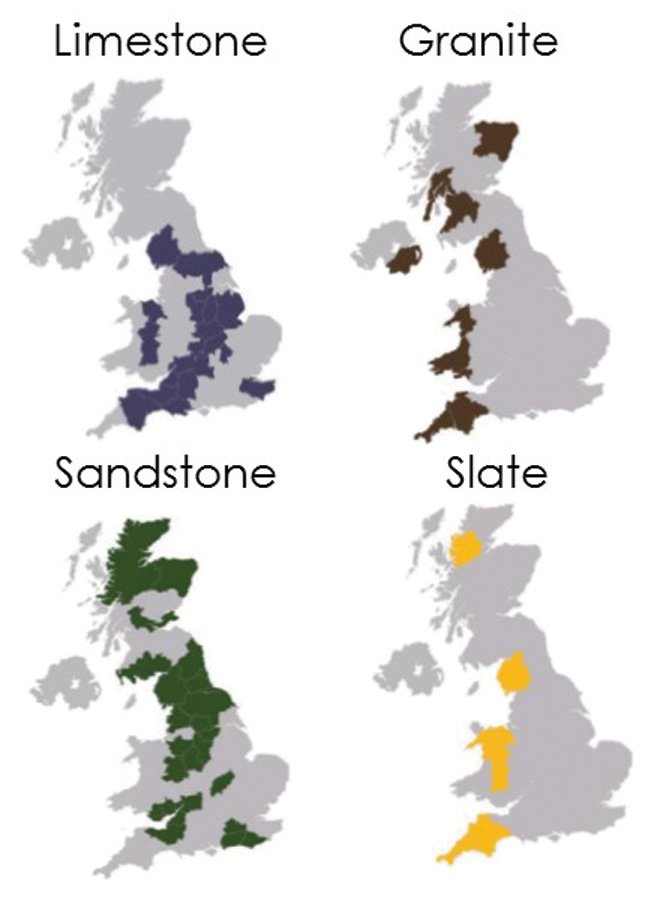Stone Federation Great Britain’s Quarry Forum represents the companies that quarry and mine dimensional stone from the British Isles. Here the Forum talks about issues relating to the selection and use of indigenous stones.
British Stone: The Geology
Britain is home to an impressive range of natural stone that provides architects, specifiers, and designers with a wide range of choices in material type, colour and texture.
To enable specifiers to better understand what’s on offer right on their doorstep, this month we’re going to take a brief look at the fascinating belts of indigenous material running the length and breadth of the United Kingdom.
Limestone
A widely used type of natural stone, limestone comes in a range of geological forms, sometimes containing small fossils and shells that add to its attraction.
It occurs naturally in many parts of the UK but the main belt runs from Dorset and Somerset in the South West, through to the Cotswolds and Oxfordshire and then on into Northamptonshire, Lincolnshire and north of the Humber.
Limestone is a sedimentary rock composed primarily of calcium carbonate (CaCO3). Limestone’s durability means it lends itself to a wide array of applications from cladding to internal flooring, although much of it is also easily carved, which makes it ideal for architectural features and mouldings, and statues and sculptures.
Granite
This is igneous rock, which means it is formed by the slow crystallisation of minerals including quartz, feldspar and mica from magma forced up through the earth’s crust.
It is quarried in a small number of locations in the UK. Devon, Cornwall, Gwynedd, Aberdeen and Peterhead are all home to naturally occurring sources of Granite.
Granite comes in a wide variety of colours and grain patterns. The flashes of colour within Granite provide depth, a quality enhanced when a full polish is applied.
The interlocking crystal structure gives granite both high strength and low water absorption, which make it ideal for applications such as cladding and paving, plinth courses and worktops.
Sandstone
Sandstones are strong and resilient sedimentary stones with an abrasive granular texture that makes them slip resistant. That can make them particular good for paving (most famously, Yorkstone), although they can also be ideal for masonry, architectural details and carving. Many of the ‘stone cities’ of Northern England were so called due to their use of sandstone in the local architecture.
Sandstone is formed by the natural cementing together of grains of sand. How and where the deposits of sand were laid down will determine the look and nature of the stone. Sandstones come in whites, buffs, greys and reds, and sometimes some combinations of these colours.
Slate
Slate is a metamorphic stone (laid down as a sediment then altered by the heat and pressure of the Earth’s crust) found mainly in Cornwall, North Wales, the Scottish Highlands and the Lake District. It has low porosity, which is why it is best known as roofing. But it has been used as a durable and rugged building stone for walls, floors and paving in the areas it occurs for millennia.
Slate is a fine grained, foliated metamorphic rock that is created by the alteration of shale, ash or mud stone by regional metamorphism. It is composed mainly of clay minerals or micas but can also contain quartz, small amounts of feldspar, calcite, pyrite and hematite. True slate is defined by the presence of a ‘slaty’ cleavage that allows it to be split easily – again good for thin roofing.
Slates typically have high strength, low water absorption and are particularly inert, making them easy to maintain.
To start your search for indigenous British Stone, go to bit.ly/BritStone.

